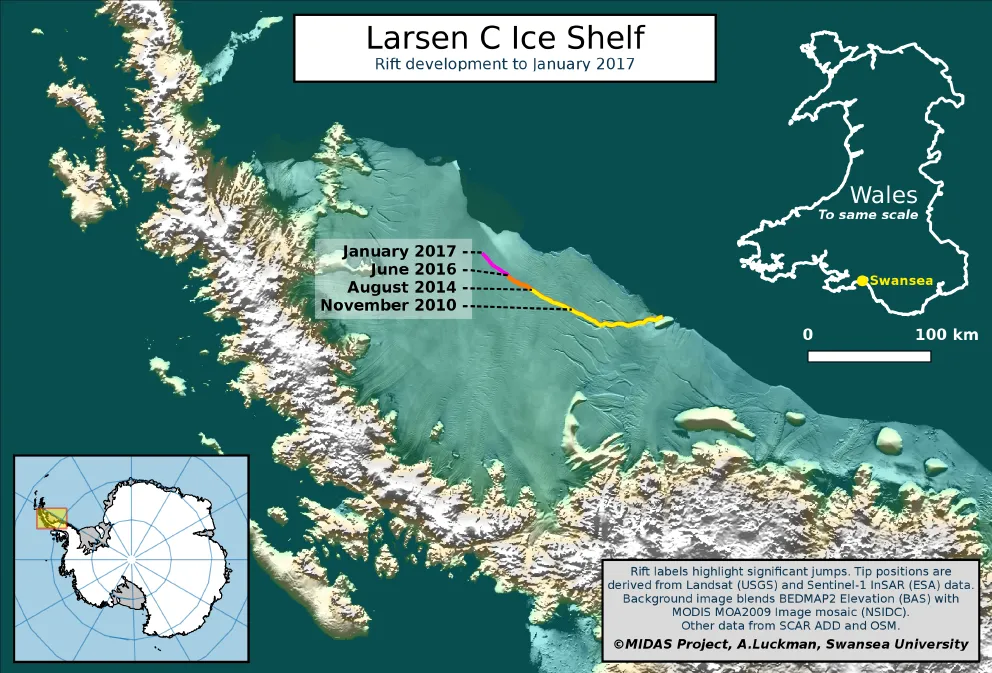An Iceberg Larger Than Rhode Island Is Poised to Break From Antarctica
Its break from the ice shelf could spell trouble for the frozen expanse
/https://tf-cmsv2-smithsonianmag-media.s3.amazonaws.com/filer/21/21/2121a1a4-2d3b-458f-99b4-b3bb76c88023/640px-larsenc_photo_2016315_lrg.jpg)
For years, scientists have watched as an enormous crack along Antarctica’s northernmost ice shelf has slowly grown wider and wider. But in the last few weeks, it suddenly grew by nearly 11 miles—and its break from the ice shelf could trigger a large-scale breakup of the frozen expanse.
According to the United Kingdom-based Project MIDAS, which has spent years surveying the ice shelf, a 2,000-square-mile chunk of ice is hanging on by just a thread. If the crack continues to grow at its current rate, the ice shelf could collapse in just a matter of months, forming one of the largest icebergs ever recorded, George Dvorsky reports for Gizmodo.
"If it doesn't go in the next few months, I'll be amazed," Swansea University researcher and Project MIDAS leader Adrian Luckman tells Matt McGrath for the BBC. “[I]t's so close to calving that I think it's inevitable."

Since 2011, the crack separating the ice from the rest of the shelf has grown by about 50 miles and widened by more than 1,000 feet, Chris Mooney reports for The Washington Post. “When it calves, the Larsen C Ice Shelf will lose more than 10 percent of its area,” Project MIDAS writes in a statement. “This event will fundamentally change the landscape of the Antarctic Peninsula.”
This is the third section of the Larsen ice shelf to face collapse in the last few decades. The first section, known as Larsen A, collapsed in 1995, and Larsen B suddenly followed suit in 2002. Since then, researchers have watched the growing crack along Larsen C with trepidation, Mooney reports. Now that the crack appears to be gaining ground with increasing speed, it could mean the ocean will soon gain an iceberg—or, rather, ice island—larger than Rhode Island.
“I think the iceberg will calve soon,” Daniela Jansen, a researcher with Germany’s Alfred Wegener Institute who works with Project MIDAS, tells Mooney. “The jumps of the rift tip occurred in shorter time intervals the longer the rift got. This is probably due to the longer ‘lever’ for the forces acting to advance the rift, such as the up and down of the tides or strong winds towards the sea. Whether it will be months or maybe next year, I don’t know.”
While it’s impossible to say when Larsen C will fall into the ocean, it’s likely that maps of Antarctica may soon need revision.